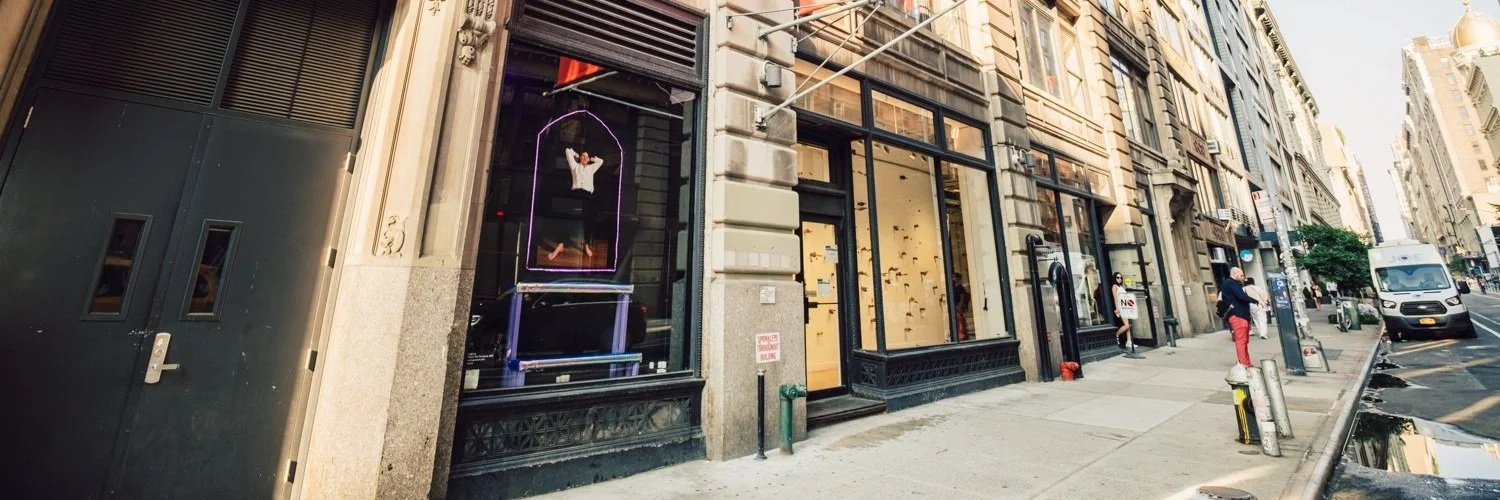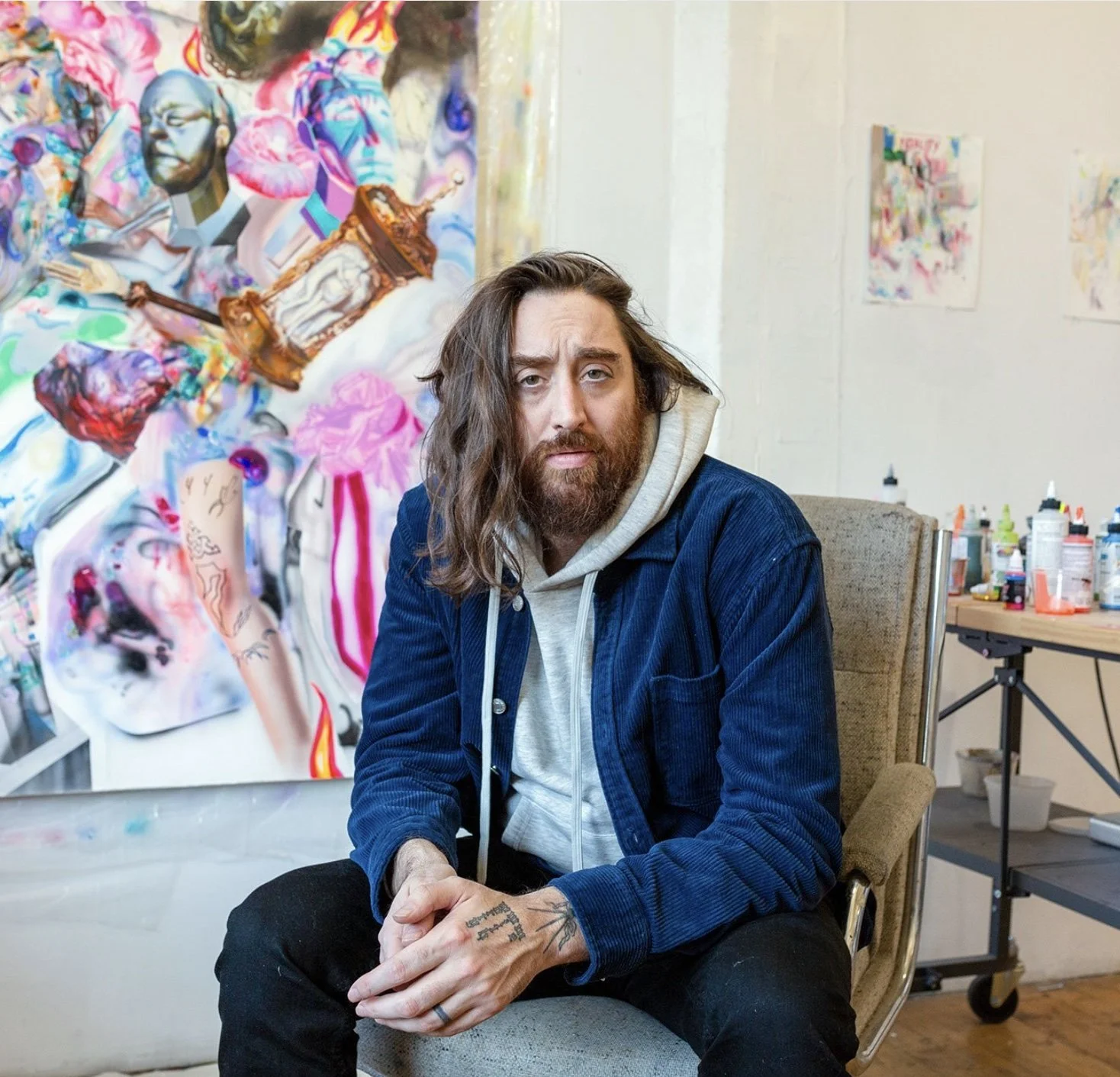Introducing the Online MFA in Art Practice — SVA’s first fully online MFA
The MFA Art Practice program at SVA is a three-year, 60‑credit online graduate program for artists seeking both flexibility and rigor.
Built around sustained critique and mentor-led study, the program delivers six semesters of interactive, media‑rich coursework you can complete from your own studio—no relocation or visa required. Each summer, students are invited to the nine‑day SVA Art Practice Summer Symposium (optional and free for Art Practice students); the symposium will offer opportunities for in‑person critiques, exhibitions, and community collaboration, all taking place in the Chelsea arts district of NYC.
Interdisciplinary by design, Art Practice supports work across mediums and methods, blending theory, research, experimentation, and production. We treat making as critical inquiry and foster a global community of artists and cultural producers who challenge what matters in contemporary art.
Upon graduation, you’ll earn a terminal MFA from one of the world’s leading art and design institutions. Alumni exhibit internationally, secure prestigious residencies and grants, and teach in higher education.
Click here to submit an inquiry and learn more about the program.
-
The MFA Art Practice curriculum addresses intellectual, aesthetic, technical, and professional concerns, with an emphasis on locating one’s practice in a broader social context.
Our online model includes:
• Six semesters of highly interactive, media‑rich coursework completed remotely.
• Ongoing small‑group mentorship with leading contemporary artists, curators, and critics.
• An annual invitation to the nine‑day SVA Art Practice Summer Symposium in NYC (optional) in SVA’s Chelsea district.
The program cultivates experimentation, collaboration, and risk‑taking. Students engage in research‑driven practices and work across disciplines, combining traditional and emerging media, technologies, and techniques.
In the final year, students present thesis work during the Summer Symposium, with opportunities for public exhibition in New York City. Click here for a sample schedule.
Degree candidates complete 60 credits, including all required courses.STUDENTS WHO ENROLLED PRIOR TO FALL 2026
The MFA Art Practice program’s course of study addresses a wide range of intellectual, aesthetic, technical and practical concerns. An underlying thread across the curriculum is the ability to situate one’s creative practice within a thoroughly considered social context.The program’s low-residency framework comprises three intensive summer residency periods on SVA’s campus in the heart of Chelsea in New York City, and four semesters of rigorous, highly interactive rich-media coursework that can be completed from anywhere in the world. Throughout the program, each artist also works under the close guidance of an assigned mentor.
Artists in the program engage in research-based practices, and are encouraged to converse and collaborate across subject matters using a combination of traditional and non-traditional media, technologies and techniques. Students combine personal narrative with critical theory to create works that comment on societal issues. The atmosphere is one that promotes experimentation without fear of failure.
Degree candidates must successfully complete 60 credits, including all required courses. The final summer semester includes the public presentation of a thesis project and accompanying written thesis document.
See the full course listing here.
-
The MFA Art Practice fosters sustained engagement with leading voices in contemporary art, connecting students to internationally recognized artists, curators and critics. Through small, semester-long mentor groups, students receive personalized guidance, critique and professional insight in a focused, supportive environment.
-
After completing 20 credits, MFA Art Practice students are invited to a nine‑day Summer Symposium in New York City at no additional cost. Dormitory housing is provided (other travel expenses are not included).
Over nine days in the Chelsea arts district, students, faculty, visiting artists, and members of the public convene for critiques, artist talks, studio visits, gallery and museum access, and faculty‑led seminars that connect directly to the pulse of the contemporary art world.
Final‑year students may present thesis work in a public exhibition as part of the Symposium. -
The MFA Art Practice is designed to remove traditional barriers to earning a top-tier MFA. With a significantly lower cost than comparable programs and a flexible, low-residency format, students can decide how best to structure their time, space and practice.
The program tuition structure is transparent at $1,000/credit, offering a competitive rate that promotes accessibility and allows students to plan their funding without waiting to hear about additional awards.
-
Because the MFA Art Practice program is delivered online, students may study from their home country and typically do not need a U.S. student visa. The optional NYC Summer Symposium involves short‑term U.S. travel; students should review current U.S. entry requirements for their nationality and consult SVA’s International Student Office for guidance.
Live sessions are offered across time zones, with asynchronous alternatives when needed. All coursework is delivered in English. -
Successful applicants will have completed a full undergraduate education and have been granted a BA, BS, BFA or the equivalent. Applicants are not required to have an undergraduate degree in fine arts. Most candidates will have between two and five years experience as a practicing artist beyond their undergraduate education. However, we expect that some students may come directly from an undergraduate degree program. Applicants should be fluent English speakers and writers and be able to demonstrate technical proficiency in at least one visual art form. Because of the nature of a low residency program, candidates must demonstrate a high level of professional discipline, be self-reliant, and be prepared to take significant personal responsibility for the successful completion of their graduate program. Applications submitted on or before December 9 will be considered for early decision. The preferred general application deadline is January 15.
Applications open in September.
Faculty Spotlight
Andrew Woolbright
Graduate Seminar III
Who do you most admire?
”People who have practices that build space and context for others–Adrian Piper, Mary Kelly, Meyer Shapiro, TJ Clark, Phong Bui, Raphael Rubinstein.”
Student Spotlight
DW Zinsser ‘25
DW Zinsser is a visual artist living and working in New York City. Zinsser work explores the resilience of the fluid body through repetitive mark making.






